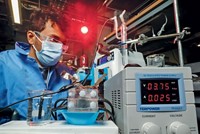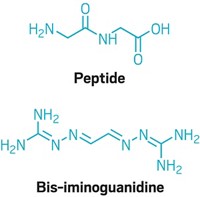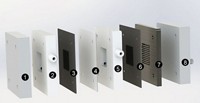Advertisement
Grab your lab coat. Let's get started
Welcome!
Welcome!
Create an account below to get 6 C&EN articles per month, receive newsletters and more - all free.
It seems this is your first time logging in online. Please enter the following information to continue.
As an ACS member you automatically get access to this site. All we need is few more details to create your reading experience.
Not you? Sign in with a different account.
Not you? Sign in with a different account.
ERROR 1
ERROR 1
ERROR 2
ERROR 2
ERROR 2
ERROR 2
ERROR 2
Password and Confirm password must match.
If you have an ACS member number, please enter it here so we can link this account to your membership. (optional)
ERROR 2
ACS values your privacy. By submitting your information, you are gaining access to C&EN and subscribing to our weekly newsletter. We use the information you provide to make your reading experience better, and we will never sell your data to third party members.
Greenhouse Gases
New sorbent captures 3 times as much CO₂
The material can also convert the greenhouse gas into baking soda for ocean storage
by Prachi Patel, special to C&EN
March 20, 2023

A new sorbent can capture up to three times as much carbon dioxide from air as known materials (Science Advances 2023, DOI: 10.1126/sciadv.adg1956). When exposed to seawater, the sorbent also converts carbon dioxide into sodium bicarbonate, or baking soda, that can be safely stored in oceans.
Eighteen plants that remove carbon dioxide directly from air operate today in Canada, Europe, and United States, according to the International Energy Agency (IEA). These pilot-scale plants use amine-based liquids or solids to capture carbon dioxide. The materials are then heated to release the carbon dioxide for storage or use and free the sorbent for reuse.
But it costs a few hundred dollars to capture a ton of CO2 with today’s technologies. Costs need to go down for direct-air capture (DAC) to be deployed widely enough to help bring the world’s carbon emissions to zero by 2050, according to the IEA.
One way to do that is to boost a sorbent’s capacity to soak up CO2 at its 400 parts-per-million concentration in air. Arup K. SenGupta, an environmental engineer at Lehigh University and his colleagues passed a copper chloride solution through resin beads that contain polyamine groups to create a high-capacity sorbent.
Copper ions bind with the nitrogen atoms in amines, and the beads turn blue. When the researchers passed atmospheric air through a column full of the copper-modified beads, the material captured over 5 mol of CO2/kg, three times more than both the unmodified beads and most other known solid sorbents. The positively charged copper ions play a key role, triggering the reaction of CO2 with water vapor in air to form bicarbonates that bind to the copper-nitrogen complex.
Next, the researchers passed seawater through the column. Now, the copper ions exchange their bicarbonate ions with the chloride in the salt present in seawater, giving sodium bicarbonate which could be released into the sea. “The oceans can be a big sink for captured carbon dioxide,” says SenGupta.
The higher capacity of the new sorbent should bring down DAC costs, he says. He imagines shore-based or offshore plants where air and seawater pass through columns full of sorbent. Later, the baking soda–laden water is deposited in the ocean. “This should cost less than $100 per ton of CO2 if we build to large capacity. If we are to use direct air capture worldwide, you need a technology that you can disseminate in poor or less developed countries.”
“The carbon-loading capacity of the material is noteworthy,” says David Keith, a physicist at Harvard University and founder of DAC company Carbon Engineering. But increasing the speed at which the material traps carbon dioxide will be crucial for bringing down cost. “Fast kinetics are required for practical air capture,” he says, “or the cost of the air contacting system dominates.”





Join the conversation
Contact the reporter
Submit a Letter to the Editor for publication
Engage with us on Twitter